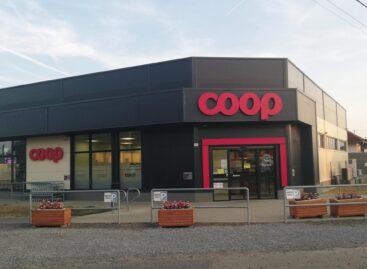IT sneaking into stores unnoticed
In modern stores, we are becoming users of sophisticated IT systems without even noticing it. In some countries, advanced digital systems have already invaded stores, with IT systems making shopping as more convenient as it is to send home pictures of a holiday using cell phone Internet instead of a postcard. The majority of Hungarian retailers have recognised that IT systems are an essential precondition of efficient operation in not only logistic and warehousing applications but in improving the quality of service and boosting customer loyalty as well. A merchandise-focused approach is gradually being replaced by a customer-focused approach in retail units. Electronic shelf labels, info terminals and self checkout serve this new approach which can bring new customers and help in collecting more knowledge about their needs than ever before. Self-checkout is one of the most important among such innovations. This solution has been in use in the US and several European markets for years. It is essentially the combination of a bar code reader and a bank card reader which allows customers to scan the products and pay for them on their own. During the process, customers receive guidance from a touch screen, see the prices of different items and can choose the method of payment. There are intelligent anti-theft solutions built into the system which keep the risk of theft as low as it is in the case of conventional checkout. Self-checkout has been introduced recently in 100 units of a retail chain in Slovenia. To their great surprise, the operators of the system discovered that older generations use self-checkout more frequently than younger people. In this chain, self-checkout is used for 23 percent of total purchases. Electronic shelf labels have appeared in the Hungarian market. According to a report by Szintézis Informatika Zrt, an LCD label system operates in Praktiker stores and it is to be installed in 10 more units. Some CBA stores, pharmacies and IT stores have also been equipped with similar systems. At present, Szintézis is the only company providing complete store installations. Following intensive market research, the products supplied by Pricer have been found by them to be the best for the Hungarian market. For electronic shelf label systems, it is essential to allow two-way communication. For example, there are segment based labels everywhere in a CBA store, except in the vegetables area where graphic displays have been installed which provide information about the place of origin and any other data though to be relevant. According to Dávid Szabó from Szintézis, graphic displays will replace segment based labels within 8-10 years. Apart from LCD, electronic paper solutions also exists, like those offered by Laurel Kft. However, e-paper is too expensive compared to graphic labels at present. Its advantage is minimal energy consumption and resemblance to real paper. Electronic shelf labels systems are supplied with data using RF or IR transmitters, of which IR systems are faster and more reliable. According to estimates by Szintézis, investment in electronic shelf label systems is returned within 1-2 years and 70 percent of customers welcome such systems, while 25 percent do not even notice the difference.
Related news
Related news
László Pekó: “Coop isn’t just a network, it is a way of life – and has been for 30 years”
🎧 Hallgasd a cikket: Lejátszás Szünet Folytatás Leállítás Nyelv: Auto…
Read more >Winners of the 2025 Retailer of the Year award announced
🎧 Hallgasd a cikket: Lejátszás Szünet Folytatás Leállítás Nyelv: Auto…
Read more >K&H: significant price drop in the pork market
🎧 Hallgasd a cikket: Lejátszás Szünet Folytatás Leállítás Nyelv: Auto…
Read more >



